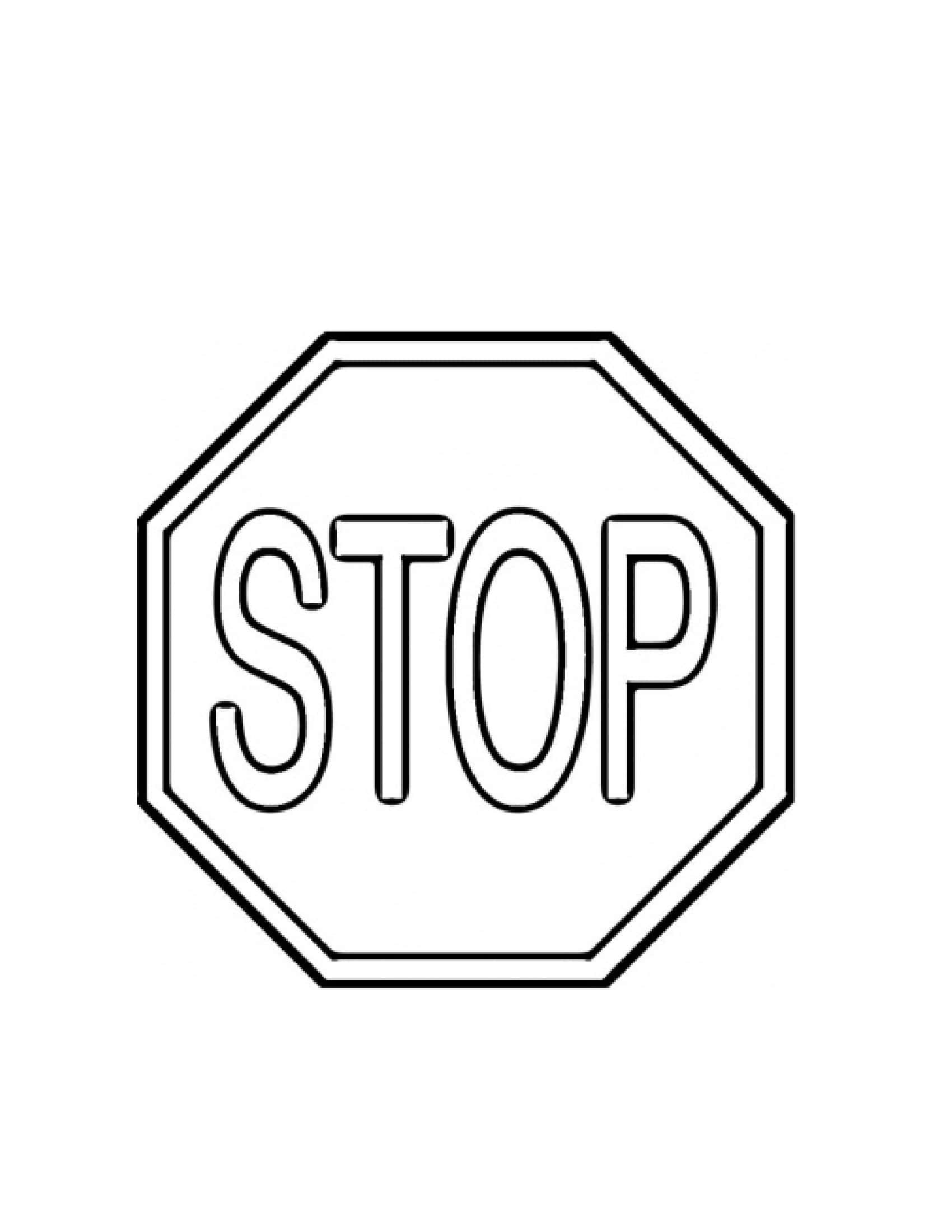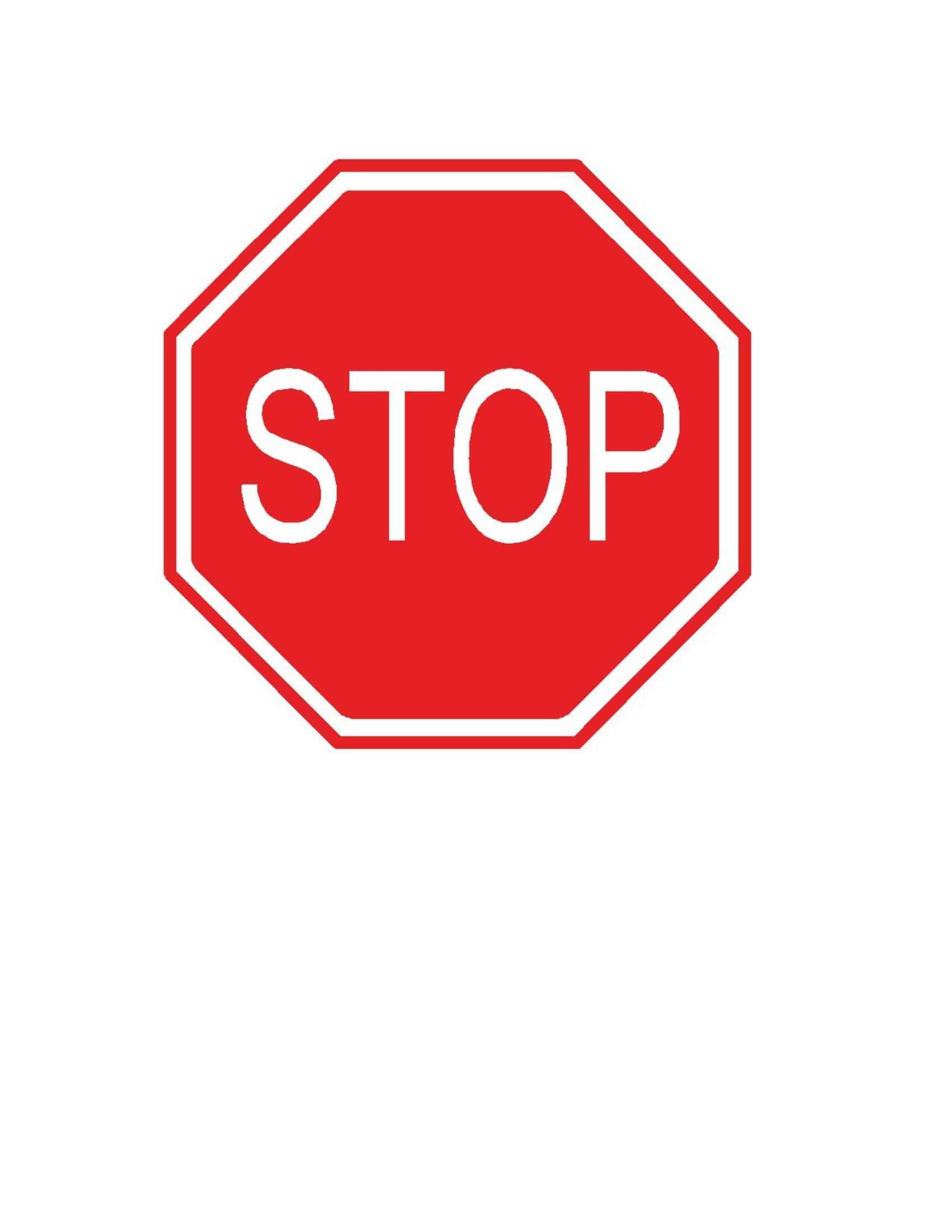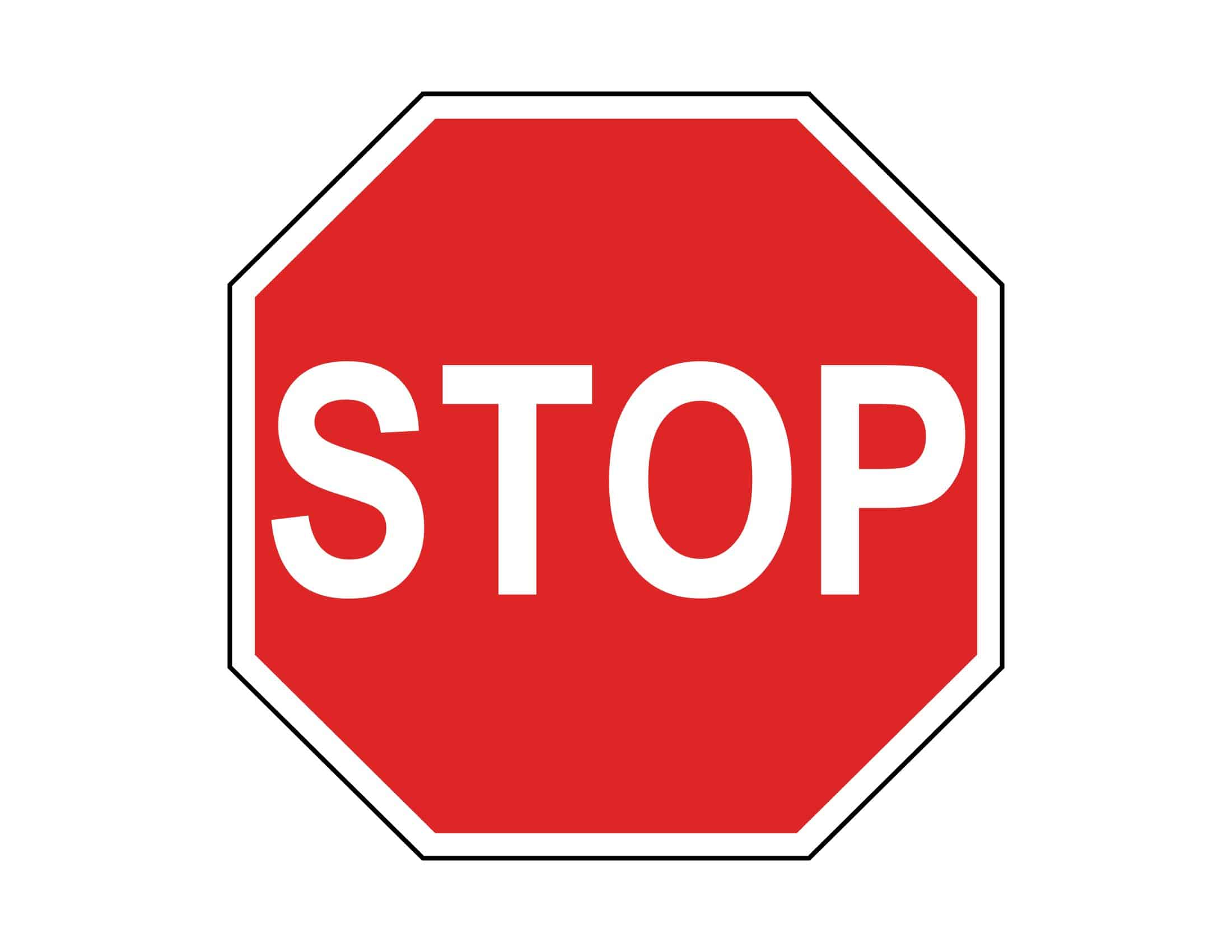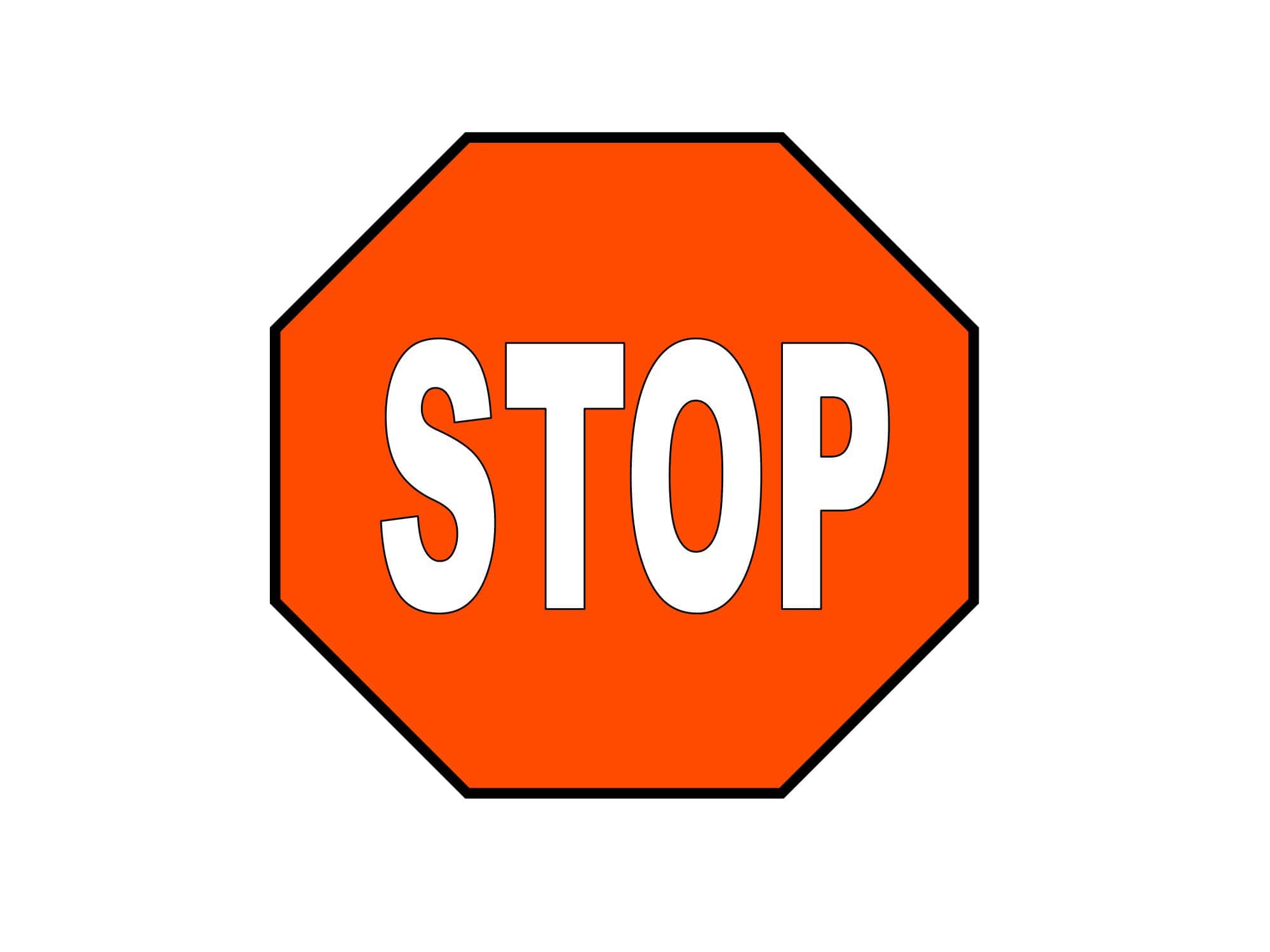Stop signs are an essential traffic control device to alert drivers to come to a complete halt. Placing homemade versions of official signs is prohibited. However, for uses like labeling toy vehicles, planning play areas, or creating educational activities, printable stop sign templates provide a fun, legal alternative.
This article includes free DIY templates for creating customizable stop signs. Our realistic designs match real stop sign shapes, colors and fonts. Print them using cardstock and colored paper to mimic retro reflective engineering grade signs. Use the creative ideas included to integrate printable stop signs into kids’ games, safety demos and dramatic play areas. Even model railroads and dioramas gain more realism with customized details like stop signs. Setting up an inviting play space to learn about safe road habits is easy and affordable with these printable templates.
Table of Contents
Stop Sign Templates
A stop sign is a traffic sign used to notify drivers to come to a complete stop before proceeding. It contains the written word STOP on a red octagonal plate. A stop sign template provides specifications for this ubiquitous road sign.
The octagonal shape was adopted internationally as the standard stop sign because its unique symmetry stands out from other signs to catch a driver’s attention. The bright red also visually contrasts with the environment to increase noticeability. The template dictates white uppercase STOP text on a red background with a white trim.
Stop signs are a critical traffic control device, often posted at intersections or pedestrian crossings to mandate a full stop rather than just yielding. Drivers must bring their vehicle to a complete stop behind any stop lines before assessing that it is safe to continue. The consistent stop sign template helps reinforce this legal obligation through clear, distinctive messaging.
Purpose of the Stop Sign

The stop sign is a traffic management device used around the world to maintain road safety and ensure the orderly flow of vehicular and pedestrian traffic. The primary purpose of the stop sign is to prevent collisions and promote safe driving. Here’s a detailed look at the purpose and benefits of the stop sign:
Collision Prevention
One of the most fundamental purposes of the stop sign is to prevent collisions at intersections, driveways, or any other place where traffic may intersect. By ensuring that vehicles come to a complete stop, it provides an opportunity for drivers to assess the situation and proceed when it’s safe.
Right of Way Regulation
At intersections without traffic signals, stop signs help establish the right of way. Typically, the vehicle that arrives first has the right to proceed first. In the case of a four-way stop, the general rule is that the vehicle to the right goes first if two vehicles arrive at the same time.
Pedestrian Safety
In areas with significant pedestrian traffic, stop signs ensure that vehicles come to a complete stop, allowing pedestrians to cross safely. This is particularly important near schools, parks, and residential zones.
Traffic Calming
In residential or urban areas, stop signs can also act as traffic calming measures. By forcing vehicles to stop periodically, it reduces the likelihood of speeding and creates a safer environment for both pedestrians and other road users.
Regulation of Traffic Flow
At intersections with a high volume of traffic from one direction and minimal traffic from another, stop signs can be used to give priority to the busier road while still ensuring that traffic from the less busy road has a chance to enter or cross.
Aids Decision Making
The momentary stop at a stop sign gives drivers a pause to assess the situation, decide on the right course of action, and ensure they have clear visibility before proceeding.
Cost-Effective
Compared to other traffic control devices like traffic lights, stop signs are relatively inexpensive to install and maintain. They don’t require electricity and have minimal ongoing maintenance costs.
Universally Recognized
The octagonal shape and red color of the stop sign are universally recognized, even if the word “STOP” isn’t understood or isn’t present. This means they’re effective in diverse regions and can be easily understood by drivers from different backgrounds or countries.
Flexibility in Placement
Because stop signs don’t require electrical connections or complex infrastructure, they can be placed in a variety of locations, from urban intersections to remote crossroads.
Promotion of Defensive Driving
Regular encounters with stop signs train drivers to be more alert and cautious, promoting a defensive driving style which can reduce accidents even in areas without traffic controls.
Common Uses and Applications
Stop signs, with their octagonal shape and bold red color, are primarily utilized to control traffic and enhance road safety. Here’s a detailed breakdown of the common uses and applications of stop signs:
- Intersections:
- Two-way stops: Not every intersection requires all-direction stops. In some cases, traffic from the busier road is allowed to flow continuously, while traffic from the less busy road must stop.
- Four-way stops: These are intersections where traffic from all directions must stop. The first vehicle to arrive at the intersection is the first to proceed. If two or more vehicles arrive simultaneously, the vehicle on the right typically has the right of way.
- Near Pedestrian Crossings:
- Especially in areas without dedicated pedestrian signals, stop signs ensure vehicles halt to allow pedestrians to cross safely.
- Common around schools, parks, and densely populated residential zones.
- Railroad Crossings:
- Some railroad intersections may have stop signs to ensure vehicles halt and check for oncoming trains, especially if there isn’t a dedicated railroad crossing light or gate.
- Entrances/Exits:
- Parking lots: Ensures vehicles stop before entering a road from a parking facility, allowing them to check for pedestrians and oncoming traffic.
- Private driveways: Particularly in commercial areas, stop signs may be placed where driveways meet public roads.
- Blind Corners or Low Visibility Areas:
- In areas where drivers’ visibility might be compromised due to curves, hills, foliage, or buildings, stop signs compel drivers to stop and assess the situation before proceeding.
- T-junctions:
- At T-junctions, vehicles from the terminating road must often stop before either turning or joining the continuing road.
- Traffic Calming:
- In residential areas or near schools, stop signs can be strategically placed to slow down traffic, even if the intersection doesn’t necessarily require stopping based on traffic flow.
- Temporary Road Conditions:
- During road construction, lane closures, or when there’s an obstruction on the road, temporary stop signs might be used to manage traffic flow and ensure safety.
- Emergency Situations:
- In case of a malfunction of traffic lights or other primary control measures, stop signs may be temporarily employed to control the traffic until the primary system is restored.
- Rural or Remote Areas:
- In less populated areas where installing electric traffic signals might not be cost-effective or necessary due to low traffic volume, stop signs can offer an efficient and economical solution.
- Roundabouts or Traffic Circles:
- While many roundabouts function with a ‘yield’ or ‘give way’ approach, some may use stop signs, especially if there’s a history of accidents or if it’s a particularly busy traffic circle.
- Bus and Truck Routes:
- Stop signs can be used at intersections where large vehicles like buses or trucks merge or intersect with regular vehicular traffic, ensuring a safe merging process.
Designing a Printable Stop Sign
While official stop signage must follow strict guidelines, homemade versions can take some creative license on design. Here are considerations when making printable stop signs:
Essential Elements of a Stop Sign:
Stop signs are among the most universally recognized traffic signs worldwide. The primary elements that contribute to its recognition are its shape, color, and the presence of the word “STOP”. The octagonal (eight-sided) shape is distinctive and is readily identified even if the sign is obscured by graffiti or snow. This shape helps drivers approaching intersections recognize the sign’s message even from a distance or in limited visibility conditions. The bold, capitalized word “STOP” is usually centered on the sign, making it clear for drivers what action is expected of them. These elements ensure that the sign’s meaning is universally understood, regardless of language or cultural differences.
Choosing the Right Dimensions:
The size of a stop sign is crucial for its visibility and clarity, especially at different speeds and distances. For standard applications in the United States, for instance, the Manual on Uniform Traffic Control Devices (MUTCD) recommends a size of 30 inches across the flat sides for conventional roads. However, for expressways or other areas where vehicles might be moving at higher speeds, a larger size, typically 36 inches, is recommended to ensure drivers can see and react to the sign in time.
It’s essential to refer to local guidelines and regulations when determining the right dimensions, as these can vary based on the country or specific road conditions. When designing a printable version for educational or illustrative purposes, it should ideally be scaled down proportionally while maintaining its octagonal shape and ensuring the word “STOP” remains prominently visible.
Color Accuracy and Importance:
The bold red color of a stop sign isn’t just a design choice—it’s a critical aspect of its functionality. This color was chosen because red is associated with alertness and caution in many cultures. Additionally, the human eye is particularly sensitive to the color red, especially during the dusk and dawn hours when the sun is low, making it an excellent choice for a sign meant to grab attention.
The white, capitalized word “STOP” contrasts sharply against the red background, ensuring readability from a distance. When designing a printable stop sign, it’s essential to ensure that the color is as accurate as possible. Using the correct color codes, such as Pantone or CMYK values, can help achieve the right shade of red. Color accuracy is not just about aesthetics; it’s about safety and ensuring that the sign is instantly recognizable to all road users.
Printing Techniques and Tips
Creating DIY stop signs using our printable templates allows flexibility in styling, but utilizing the right printing techniques will take them to the next level. Consider these tips:
Home Printing vs. Professional Printing:
When considering how to print a design or document, it’s essential to understand the fundamental differences between home printing and professional printing. Home printers, typically inkjet or laser, are convenient and suitable for personal projects, quick prototypes, or small print runs. They’re easy to use, relatively affordable, and can produce high-quality results for everyday needs. However, they have limitations in terms of print size, paper quality, and color accuracy.
Professional printers, on the other hand, are designed for large-scale, high-quality outputs. These include offset printers, digital presses, and specialty printers that can handle various materials and finishes. They’re equipped to handle bulk orders, ensuring consistency across each print. Moreover, professional printing services have a wider range of paper types, finishes, and binding options. They also have expertise in color matching, ensuring that the final print looks exactly as intended in the design.
Ensuring Color Fastness:
Color fastness refers to the resistance of a print’s color to fade or bleed over time or under specific conditions like exposure to sunlight or moisture. To ensure color fastness:
- Use High-Quality Inks: Whether you’re printing at home or professionally, the ink quality can significantly impact color fastness. Pigment-based inks generally offer better longevity and resistance to fading compared to dye-based inks.
- Choose the Right Paper: Acid-free and archival-quality papers resist yellowing and degradation, helping maintain the print’s color integrity over time.
- Protective Coatings: For prints that require additional protection, consider laminating or using UV protective sprays. These can shield the print from harmful UV rays, enhancing its resistance to fading.
- Avoid Direct Sunlight: Where you display or store the printed material matters. Continuous exposure to direct sunlight can rapidly degrade print quality. Ensure that prints are displayed in shaded areas or use UV-resistant frames or glass.
Maximizing Print Quality:
To achieve the best possible print quality:
- High-Resolution Design: Always start with a high-resolution design or image. A resolution of 300 DPI (dots per inch) is standard for most printed materials. Lower resolutions may result in pixelated or blurry prints.
- Correct Color Mode: Design in the right color mode. For most professional printing, use CMYK (Cyan, Magenta, Yellow, Black) instead of RGB (Red, Green, Blue), which is typically used for digital displays.
- Quality of Paper: The paper type can influence how colors appear. Glossy papers can make colors pop, while matte papers can give a more muted look. Consider the purpose of the print when choosing paper.
- Regular Maintenance: If using a home printer, regular maintenance like nozzle checks and cleaning can prevent streaks, lines, or uneven color.
- Proofing: Always print a test or proof before finalizing large print runs. This allows you to check for any errors, color inconsistencies, or quality issues.
- Professional Calibration: If color accuracy is crucial, consider calibrating your monitor and printer. Professional printing services often use calibrated systems to ensure that the colors on screen match the printed output closely.
Conclusion
Stop signs are an important traffic control device but also make fun props for kids’ games and educational activities when used safely. We hope this article and collection of creative printable stop sign templates sparks inspiration for incorporating DIY stop signs into playtime learning, dramatic recreations, model building, and more.
With our professionally designed templates, you can quickly make customized stop signs for any need. Use the printing tips to produce durable, realistic signs that mimic reflective engineering-grade models without the cost. Let your imagination run wild with fun stop sign creations made easily and affordably. And remember – safe driving starts with stopping at the signs! Use these templates to build safe roadway habits from an early age.
FAQs
Why are stop signs octagonal?
The octagonal shape is unique and easily recognizable, even at a distance or in low visibility conditions. It ensures that drivers can immediately identify the sign’s message, regardless of whether they can read the word “STOP”.
Why are stop signs red?
The color red is universally associated with alertness and caution. Historically, the red color was one of the easiest to recognize at a distance, even in low light, making it a suitable choice for a sign that demands immediate attention.
Is it always mandatory to stop at a stop sign, even if the road looks clear?
Yes, a stop sign requires a complete stop. Even if the road appears clear, it’s essential to halt entirely before proceeding to ensure safety.
How is a stop sign different from a yield sign?
A stop sign mandates a complete halt, while a yield sign requires drivers to slow down and only stop if necessary. With a yield sign, drivers must give the right of way to other vehicles but can proceed without stopping if the way is clear.
Why do some stop signs have a white border?
The white border, which is standard on most regulatory signs and not just stop signs, helps improve the visibility and recognition of the sign, especially in low-light conditions or at a distance.

























![%100 Free Hoodie Templates [Printable] +PDF 1 Hoodie Template](https://www.typecalendar.com/wp-content/uploads/2023/05/Hoodie-Template-1-150x150.jpg)
![Free Printable Food Diary Templates [Word, Excel, PDF] 2 Food Diary](https://www.typecalendar.com/wp-content/uploads/2023/05/Food-Diary-1-150x150.jpg 150w, https://www.typecalendar.com/wp-content/uploads/2023/05/Food-Diary-1-1200x1200.jpg 1200w)
![Free Printable Roommate Agreement Templates [Word, PDF] 3 Roommate Agreement](https://www.typecalendar.com/wp-content/uploads/2023/06/Roommate-Agreement-150x150.jpg)
